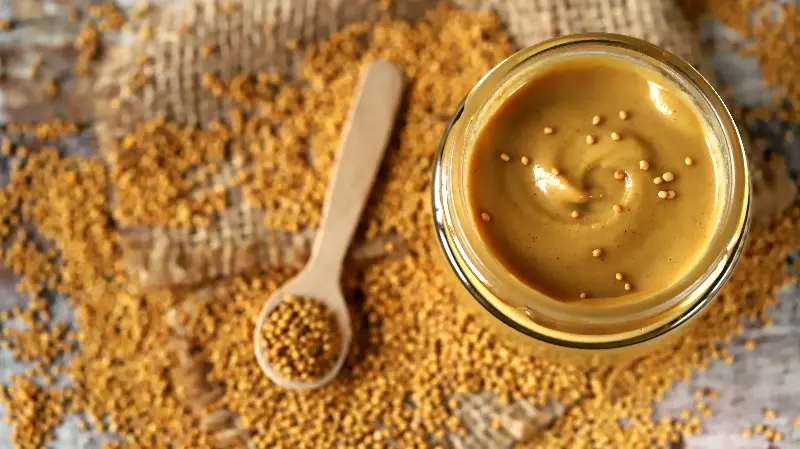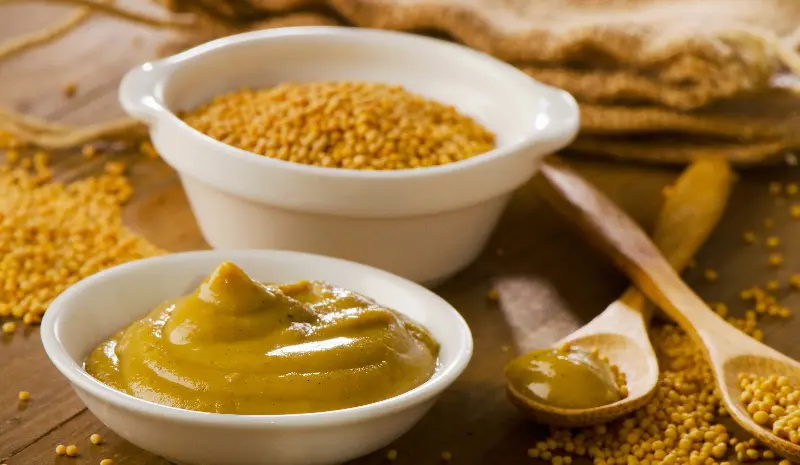If the humble mustard bottle on your counter could talk, it would have a world of stories to share. Most of us squirt it onto hot dogs, swirl it into salad dressings, or slap it onto sandwiches without a second thought. But mustard is much more than just a condiment—it’s a spice with a fascinating history, potent powers, and global reach. From ancient empires to modern kitchens, mustard seeds have traveled a remarkable journey. Let’s take a closer look at what makes mustard so much more than a sandwich spread.

Ancient Roots With Royal Appeal
The story of mustard begins thousands of years ago. Archaeologists have uncovered mustard seeds in stone age settlements, suggesting that humans were flavoring their food with mustard as early as 3000 BCE. It held a prized place in the ancient civilizations of India, Egypt, and Rome. In fact, the Romans were some of the first to make a recognizably modern version of prepared mustard by grinding seeds and mixing them with grape must, lending the condiment its Latin name “mustum ardens” or “burning must.”
The appeal of mustard spread quickly through Europe thanks to the Roman Empire. By the Middle Ages, mustard had earned its place at royal banquets. Kings and queens, especially in France and England, relished mustard for its spicy kick and medicinal properties. The famous city of Dijon, France, became the epicenter of mustard production in the 13th century. Dijon’s fame continues to this day, lending its name to one of the world’s most beloved mustards.
A Tiny Seed With Big Flavor Chemistry
What gives mustard its unforgettable zing? It all starts with the tiny seeds of the mustard plant, a close relative of cabbage and broccoli. When mustard seeds are cracked open, they unleash a group of natural compounds called glucosinolates. Once these interact with water—say, when you mix up a sauce or take a bite—they quickly turn into sharp, peppery allyl isothiocyanates.
There are three main types of mustard seeds: yellow (or white), brown, and black. Yellow seeds are mild and slightly sweet, popular in American-style ballpark mustards. Brown and black seeds pack a more potent, sinus-clearing punch, common in spicy Dijon and English mustards. The way the seeds are ground, the liquids used (water, vinegar, wine, or beer), and the addition of other spices all influence mustard’s flavor, heat, and color.

A Medicine Cabinet Staple Throughout History
Mustard hasn’t just been the life of the food party; it’s played a surprising role in medicine for centuries. Ancient Greeks prescribed mustard paste to soothe toothaches and muscle pain, while Indian Ayurvedic medicine regarded it as a warming agent for the body. In Europe, “mustard plasters” were a go-to home remedy for colds, coughs, and muscle soreness—capable of generating heat and improving circulation.
Modern science has uncovered even more reasons why mustard seeds deserve respect. They’re rich in antioxidants and selenium, and they contain anti-inflammatory compounds. Some studies suggest mustard may support heart health, improve digestion, and even offer antibacterial properties. Of course, eating a slather of mustard won’t cure all your ills, but it does bring more to the table than you might think.
A Critical Ingredient In Global Cuisine
While it might be famous for its role in burgers and sandwiches, mustard has traveled far beyond deli borders. In Indian cuisine, mustard oil is prized for its pungent aroma and used in pickling, curries, and frying. In northern Europe, it’s essential in sausages, potato salads, and pickled herring. Chinese cooks toast mustard seeds to add complexity to stir-fries and sauces. In Africa, the leaves of the mustard plant become mustard greens, a vitamin-rich staple in many stews.
Ever tried honey mustard chicken, German mustard pretzels, or even the fiery Bengali kasundi? These dishes only hint at the many ways mustard slips seamlessly into meals worldwide, offering not just flavor but also a sensory experience that wakes up the palate.

Surprising Mustard Facts To Make You Think Twice
If you still view mustard as a one-trick pony, brace yourself for a dose of condiment shock. Did you know that:
- Mustard is one of the world’s oldest condiments, predating ketchup, mayonnaise, and even soy sauce.
- The world’s largest mustard museum, the National Mustard Museum, is in Middleton, Wisconsin, USA. It houses over 6,000 different mustards from more than 70 countries.
- Despite appearing yellow, some American “yellow” mustard gets its sunshine color from turmeric, not just mustard seeds.
- In contrast to many spices, mustard’s heat gets stronger when mixed with cold water but mellows if heated.
- Queen Victoria reportedly kept a royal “mustard pot” at her table at all times, emphasizing its importance in fine dining.
The Future Of Mustard—More Than Meets The Eye
Mustard’s journey is far from over. Creative chefs are experimenting with new mustard infusions: think mustard with herbs, whiskey, or even chocolate. The rise of global cuisines means more people are discovering mustard oils and pickles. Meanwhile, health-conscious cooks are turning to mustard as a low-calorie, flavor-packed alternative to richer sauces.
So next time you reach for that jar of mustard, remember—the yellow swirl on your hot dog carries the legacy of emperors, innovators, and culinary explorers. Whether as a healer, a flavor bomb, or a cultural icon, mustard proves it’s not just a sidekick—it’s a superstar in its own right.
